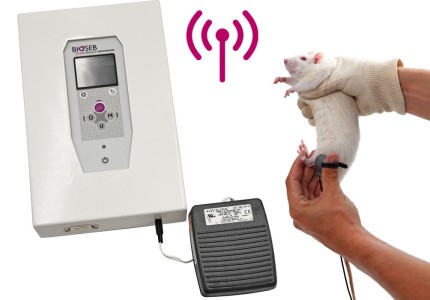Authors
M Syrett, NR Reed, WR Reed
Lab
Saint Louis University School of Medicine, Saint Louis, MO
Journal
Biology
Abstract
Low back pain (LBP) is a globally prevalent and costly societal problem with multifactorial etiologies and incompletely understood pathophysiological mechanisms. To address such shortcomings regarding the role of neurotrophins in the underlying mechanisms of pain, an LBP model was developed in rats involving two unilateral intramuscular injections of nerve growth factor (NGF) into deep trunk muscles. To date, behavioral investigations of this NGF-LBP model have been limited, especially as it pertains to female pain behaviors. This study compared mechanical sensitivity to noxious (hyperalgesia) and non-noxious (hypersensitivity) stimuli in control and NGF-injected male and female rats through pain resolution. Although the baseline testing revealed no differences between males and females, NGF-injected females demonstrated prolonged ipsilateral deep trunk mechanical hyperalgesia that resolved seven days later than males. Moreover, females showed bilateral trunk mechanical sensitivity to noxious and non-noxious stimuli compared to only ipsilateral behaviors in males. Sex differences were also observed in the severity of behavioral responses, with females displaying greater mean differences from baseline at several timepoints. Overall, these NGF-LBP behavioral findings mirror some of the sex differences reported in the clinical presentation of LBP and accentuate the translatability of this NGF-LBP model. Future studies using this LBP-NGF model could help to elucidate the neurobiological mechanisms responsible for the development, severity, and/or resolution of muscular LBP as well as to provide insights into the processes governing the transition from acute to chronic LBP.
BIOSEB Instruments Used
SMALGO: SMall animal ALGOmeter (BIO-SMALGO)
Source :

 Pain - Thermal Allodynia / Hyperalgesia
Pain - Thermal Allodynia / Hyperalgesia Pain - Spontaneous Pain - Postural Deficit
Pain - Spontaneous Pain - Postural Deficit Pain - Mechanical Allodynia / Hyperalgesia
Pain - Mechanical Allodynia / Hyperalgesia Learning/Memory - Attention - Addiction
Learning/Memory - Attention - Addiction Physiology & Respiratory Research
Physiology & Respiratory Research











![Dynamic Weight Bearing 2.0 – Postural Module [Add-on]](https://bioseb.com/733-home_default/dynamic-weight-bearing-20-add-on-postural-module.jpg)
























 Pain
Pain Central Nervous System (CNS)
Central Nervous System (CNS) Neurodegeneration
Neurodegeneration Sensory system
Sensory system Motor control
Motor control Mood Disorders
Mood Disorders Other disorders
Other disorders Muscular system
Muscular system Joints
Joints Metabolism
Metabolism Cross-disciplinary subjects
Cross-disciplinary subjects CONFERENCES & MEETINGS
CONFERENCES & MEETINGS 